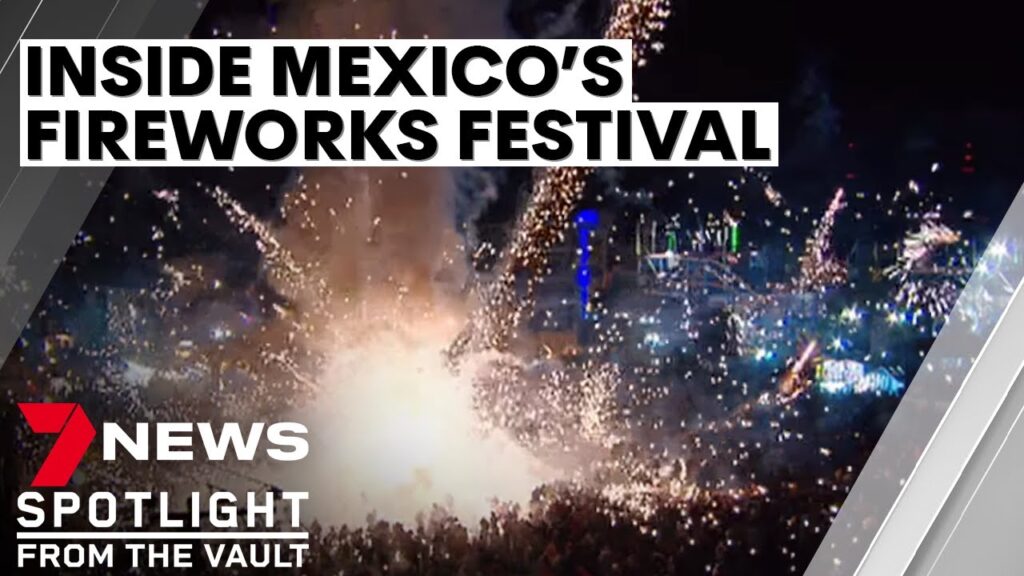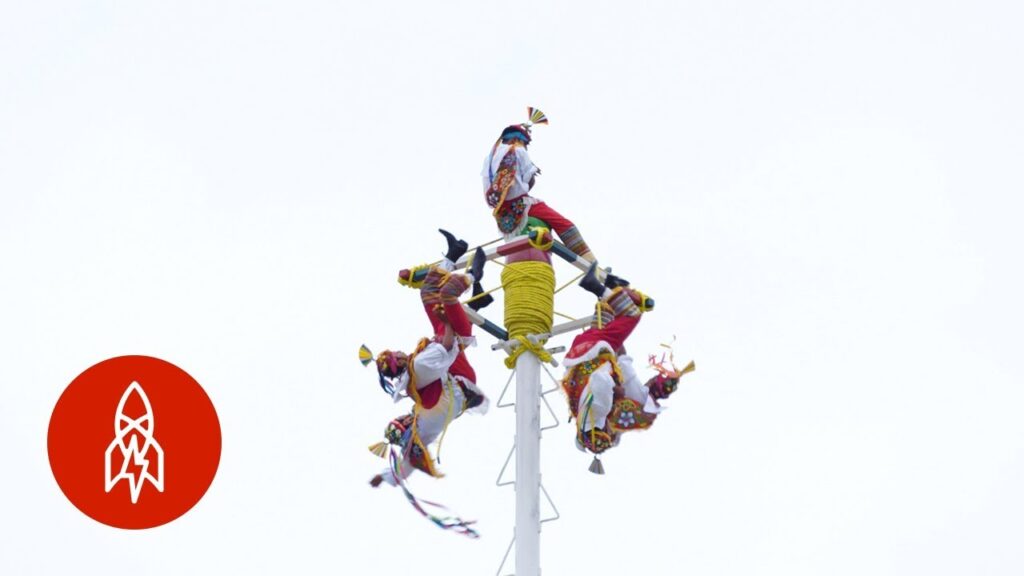A Brief History of the National Pyrotechnic Festival in Mexico
The National Pyrotechnic Festival in Mexico is an annual event that has its origins in the small town of Tultepec, considered the country’s pyrotechnic capital. The tradition began in the early 19th century, as regional artisanal fireworks makers started to gather to show off their skills and compete with one another. Over time, the celebration grew, gaining national recognition and drawing visitors from all corners of Mexico and beyond. Today, the festival is a vibrant testament to the country’s rich cultural heritage and its people’s passion for festive celebrations.
Initially, the festival was a modest affair, with local families displaying homemade fireworks. The event was deeply rooted in the community’s religious devotion, with fireworks displays forming part of the celebrations for the patron saint of the town, Saint John of God, who was known for his work with the sick and his heroic acts when handling explosives in hospitals. These early celebrations laid the foundation for the explosive growth of the festival in both scale and popularity as the years progressed.
By the mid-20th century, the National Pyrotechnic Festival started to shape into the form that we see today. The introduction of the Castillos de Fuegos Pirotécnicos, or Firework Castles, added a dramatic flair to the festivities. Artisans compete to build towering structures lavishly decorated with fireworks that are meticulously designed to produce a choreographed show of light, color, and sound. The constructions are not only a testament to the pyrotechnic skills of the makers but also a reflection of Mexican creativity and enthusiasm for communal festivities.
The festival has now become a significant event on Mexico’s cultural calendar, attracting thousands of attendees each year. It typically spans over the course of a week and includes various competitions, such as the display of pyrotechnic art and the famously exhilarating Pamplonada de Toritos, where participants run alongside firework-laden bull-shaped frames through the streets. Despite the modernization and commercialization, the festival remains true to its origins, continuing to celebrate the artistry of traditional Mexican fireworks craftsmanship.
Exploring the Cultural Significance of Mexico’s Pyrotechnic Traditions
The vibrant pyrotechnic traditions of Mexico are not just a spectacle of lights and sounds but also a rich tapestry of cultural significance deeply woven into the fabric of Mexican life. Each burst of color in the sky tells a story, a narrative steeped in history and community celebration that dates back centuries. The customs surrounding fireworks in Mexico are as varied as the country’s landscapes, with each region boasting its own unique blend of pyrotechnic artistry.
In the town of Tultepec, the annual National Pyrotechnic Festival illuminates the skies, attracting visitors from all over to witness the mastery of fireworks. Tultepec is known as the country’s fireworks capital, and for good reason. The town’s artisans craft intricate fireworks, which become the stars of the show during “la Quema de Toritos” — the burning of the bulls — where fireworks-laden, bull-shaped frames take to the streets in a daring and vibrant display that combines artistry with a dash of controlled chaos.
But it’s not just about the visual extravaganza; fireworks have a profound ritualistic importance. In many Mexican celebrations, from religious festivals like the feast of Our Lady of Guadalupe to secular events like Independence Day, fireworks are believed to ascend to the heavens, acting as a communion between the earth and the divine. They are expressions of joy, reverence, and even challenges faced, culminating in a shared moment of awe and wonder.
Regional variations of firework use also highlight the diversity within Mexican culture. In Oaxaca, for example, the «calenda» processions during the Guelaguetza festival create a symphony of colors and sounds, enhancing the traditional dances and music. The fireworks used in Oaxacan celebrations often have distinct shapes and patterns that relate to the local folklore and serve as an explosive counterpart to the vibrant costumes and cultural expressions on the ground.
The craftsmanship behind Mexican fireworks is a trade passed down through generations, regarded as a form of living heritage. The meticulous construction of each firework — from the small «cohetes» to the grand aerial displays — reflects an age-old tradition that artisans take pride in preserving. It is not merely a trade but a passionate endeavor that represents the joyous spirit and vibrant culture of the Mexican people, capturing the hearts of spectators through a brilliant dance of light and color.
The Thrills and Risks: Understanding the Dangers of Pyrotechnics
Mexico’s long-standing tradition of colorful pyrotechnics is a sight to behold, ingrained in the cultural fabric and celebrated at numerous festivals and holidays. The sheer spectacle of fireworks bursting in the sky provides an adrenaline rush and a sensory feast to onlookers. However, while pyrotechnics are a staple at many Mexican celebrations, they come with inherent dangers that should not be overlooked. From the bustling fireworks markets to the grand displays at festivals, safety should be a paramount concern for both spectators and pyrotechnicians.
Improper Handling and Usage
One of the primary risks associated with the use of fireworks is improper handling. Every year, there are reports of injuries resulting from users not taking the necessary precautions when lighting fireworks. It’s not just the users at risk; bystanders, especially children, can be caught in the crossfire of errant sparks or debris from improperly used pyrotechnics. Ensuring that fireworks are used responsibly and in accordance with local laws and guidelines is crucial in mitigating these risks.
Quality Control and Manufacturing Standards
A contributing factor to the dangers of pyrotechnics is the variance in quality control and manufacturing standards. In Mexico, the production of fireworks is often a local craft, with small-scale operations that may not adhere to stringent safety regulations. This can lead to the creation of fireworks that are unpredictable and potentially hazardous. Purchasing fireworks from reputable sources and being vigilant about the quality and origin of the products can help prevent accidents caused by defective pyrotechnics.
Environmental Concerns and Fire Hazards
In addition to personal injuries, fireworks pose a significant risk to the environment as a source of both pollution and potential fire hazards. The dry conditions in certain regions of Mexico can make areas particularly susceptible to fires sparked by fireworks. Furthermore, the remnants of firework displays, including metal particles and chemical residues, can contribute to environmental pollution, affecting local wildlife and ecosystems. It is essential for communities to consider the environmental impact of fireworks displays and explore safer, eco-friendly alternatives where possible.
Visiting the National Pyrotechnic Festival: A Guide for Adventure Seekers
The National Pyrotechnic Festival in Tultepec, Mexico, is not merely a display of fireworks—it’s a vibrant testament to the artistry and skill of the local fireworks craftsmen. Held annually in the town known as the country’s fireworks capital, this event attracts thousands of visitors from around the globe, all eager to witness the spectacle of light, color, and excitement. Safety is a top priority, and the festival is well-orchestrated to ensure the awe-inspiring displays can be enjoyed by all without incident.
Featuring an array of competitions, workshops, and exhibitions, the festival is a paradise for adventure seekers looking for an immersive cultural experience. The highlight for many is the ‘Pamplonada de Toros’, a heart-racing event where life-sized bull-shaped frames filled with fireworks charge through the streets, creating a vivid and exhilarating display that challenges the bravest to come up close.
Taking place over the course of ten days in March, the festival’s programs offer something for everyone. From the traditional ‘castillos’ or firework towers, which can reach astonishing heights and exhibit a range of colored flames and crackling effects, to the selection of regional food vendors serving up local delicacies, your senses are bound to be delighted. To make the most out of the festival, be sure to attend multiple days as each offers a unique set of attractions and performances.
Travelers should plan their visit to coincide with the grand finale if possible—the most spectacular display of fireworks of the entire festival. This is when the sky becomes a canvas for pyrotechnic artists, who paint the night with breathtaking patterns and sequences that truly capture the spirit of Mexico’s fiery passion. Accommodation options are plentiful, but booking early is essential to secure a spot close to the festivities during this incredibly popular event.
Celebrating Over Three Decades of Mexico’s Fiery Festival
Just beyond the fringes of bustling city life, Mexico unfurls a tapestry of traditions that ignites the spirit of anyone who witnesses it. For over 30 years, the Fiery Festival, or «Festival del Fuego,» has beckoned adventure-seekers and cultural aficionados alike to plunge into its vibrant embrace. This annual event, held in the heart of Mexico’s rich cultural landscape, is a fiery testament to the nation’s passion and zest for life.
The origins of the Fiery Festival trace back to the early 1990s, when a small community of artists and performers sought to encapsulate the dynamic essence of Mexican culture. What began as a local gathering has since exploded into an international phenomenon, attracting thousands of visitors from across the globe. Year after year, the festival has steadily grown, each time adding new dimensions to its already exuberant display.
At the core of the Fiery Festival are the scintillating performances that set the night ablaze. Fire dancers, with their hypnotic swirls and daring acrobatics, paint the dark skies with strokes of light and heat. The rhythmic beats of live music reverberate through the air, as mariachi bands, indigenous drum circles, and contemporary musicians create a symphony of sounds that is quintessentially Mexican.
Experiencing the Cultural Mosaic
Beyond the spectacle of flames and fanfare, the festival is a melting pot of Mexico’s diverse cultures. Each region of this vast country contributes its unique flavors, crafts, and customs to the festival grounds. Visitors can meander through vibrant marketplaces, where artisans showcase their handiwork, from intricately woven textiles to delicate ceramic ware. Each item tells a story, a little piece of Mexico’s soul offered to the world.
The Flavors of Festivity
No celebration of Mexico’s spirit is complete without a feast for the senses. The Fiery Festival excels at this, offering a dizzying array of traditional Mexican cuisine. Savor the rich mole sauces, the fiery tingle of authentic salsas, and the hearty comfort of hand-made tamales. Each bite is a celebration of over three decades of culinary heritage and the unbroken chain of recipes passed down through generations, each adding a unique twist along the way.



